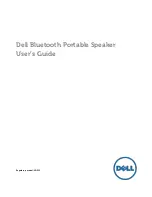
Owner’s Manual for Portable Generator
9
5. Thread dipstick into oil filler neck. Oil level
is checked with dipstick fully installed.
6. Remove dipstick and verify oil level is
within safe operating range. See
Figure 2-
13
.
Figure 2-13. Safe Operating Range
7. Install oil fill cap/dipstick and hand-tighten.
Fuel
Gasoline
Fuel requirements are as follows:
• Clean, fresh, unleaded gasoline.
• Minimum rating of 87 octane/87 AKI (91
RON).
• Up to 10% ethanol (gasohol) is acceptable
(where available; non-ethanol-premium fuel
is recommended).
• DO NOT use E85.
• DO NOT use a gas oil mix.
• DO NOT modify engine to run on alternate
fuels. Stabilize fuel prior to storage.
1. Verify unit is OFF and cooled for a mini-
mum of two minutes prior to fueling.
2. Place unit on level ground in a well venti-
lated area.
3. Clean area around fuel cap and remove
cap slowly.
4. Slowly add recommended fuel (A). Do not
overfill (B). See
Figure 2-14
.
5. Install fuel cap.
Figure 2-14. Add Recommended Fuel
NOTE:
Allow spilled fuel to evaporate before
starting unit.
IMPORTANT NOTE: It is important to pre-
vent gum deposits from forming in fuel
system parts such as the carburetor, fuel
hose or tank during storage. Alcohol-
blended fuels (called gasohol, ethanol or
methanol) can attract moisture, which
leads to separation and formation of acids
during storage. Acidic gas can damage the
fuel system of an engine while in storage.
To avoid engine problems, the fuel system
should be emptied before storage of 30
days or longer. See the
Storage
section.
Never use engine or carburetor cleaner
products in the fuel tank as permanent
damage may occur.
Liquid Petroleum Gas (LPG)
NOTE:
LPG regulator inlet pressure is approx-
imately 30 psi at 0 °F, and 218 psi at 100 °F.
• Use only standard 20 or 30 pound capacity
LPG tanks with Type 1, right hand Acme
threads with this generator. Verify re-qualifi-
cation date on tank has not expired. Do not
use rusted or damaged cylinders.
• All new cylinders must be purged of air and
moisture prior to filling. Used cylinders that
have not been plugged or kept closed must
also be purged.
• The purging process should be done by the
propane gas supplier. (Cylinders from an
exchange supplier should have been
purged and properly filled by supplier).
000116
(000105)
DANGER
Explosion and Fire. Fuel and vapors are
extremely flammable and explosive. Add fuel
in a well ventilated area. Keep fire and spark
away. Failure to do so will result in death
or serious injury.
(000166)
DANGER
Do not overfill fuel tank. Fill to 1/2 in. of top of tank to
allow for fuel expansion. Overfilling may cause fuel to
spill onto engine causing fire or explosion, which will
result in death or serious injury.
000400
A
B
(000199)
DANGER
Explosion and Fire. LP vapors are extremely flammable
and explosive. Do not use or store LP cylinder in a
building, garage, or enclosed area except as authorized
by NFPA 58 or B149.2 (Canada). Failure to do so will
result in death or serious injury.
(000200)
WARNING
Explosion and fire. The cylinder valve should be
left off (closed) when generator is not in use.
Failure to do so could result in death or serious
injury.
Summary of Contents for DF3500E Series
Page 22: ...20 Owner s Manual for Portable Generator Notes...
Page 23: ......
Page 49: ...23 Manual del propietario para generador port til Notas...
Page 50: ...Manual del propietario para generador port til 24...
Page 51: ......
Page 75: ...21 Owner s Manual for Portable Generator REMARQUE...












































